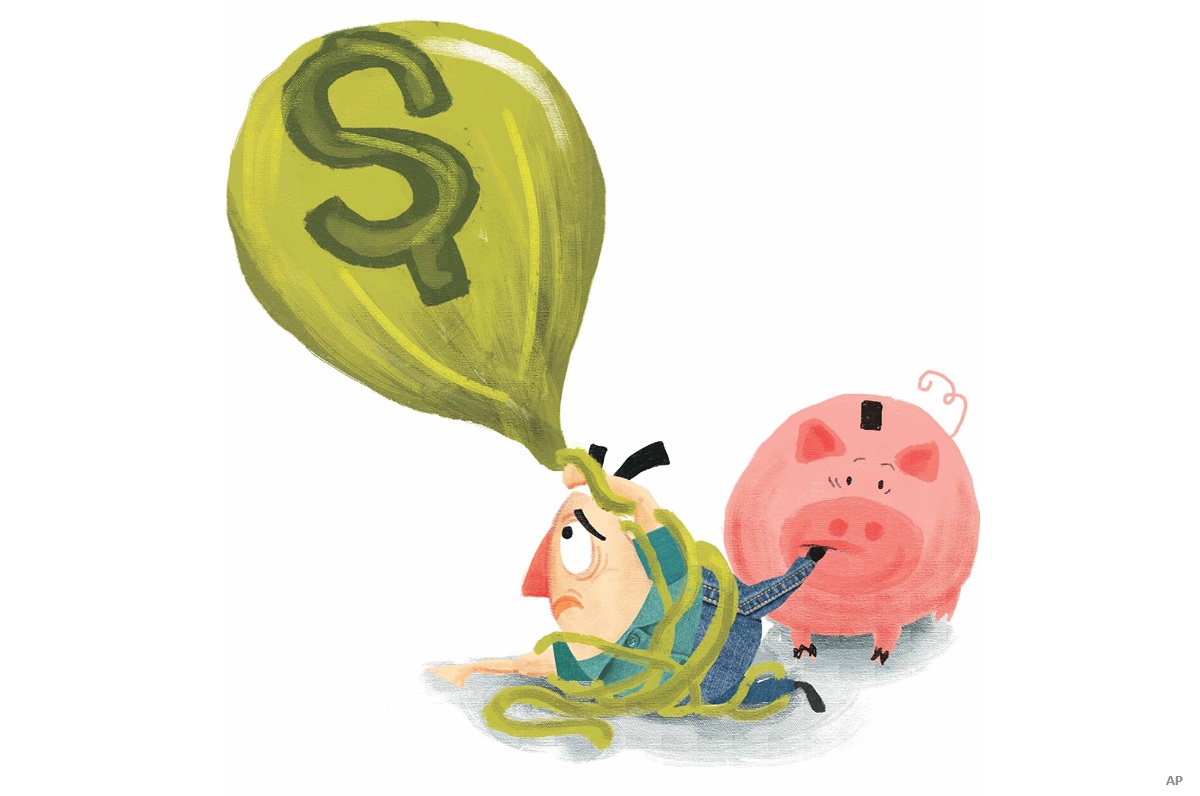
The global real estate sector has been on a roller coaster ride driven by the COVID-19 pandemic and central bank monetary tightening and then easing. Real estate specialist Maria Benavente concedes that while visible areas such as office buildings have taken a hit, she argues that other areas, such as multi-family residential buildings and cellular phone towers, remain attractive and offer long-term upside.
“It’s been a very volatile time for real estate securities for the past three years, starting with the pandemic with real estate being at the centre of things,” says Benavente co-manager of the 5-star gold-rated $223.6 million Dynamic Global Real Estate Series F. “We had a lot of store closures and non-paying tenants. That obviously created a big drawdown on securities when people were uncertain where the economy was going, and what central banks and governments would do. In the spring of 2020, transactional volumes in the real estate sector pretty much froze up.”
Real Estate Roller Coaster
Fast forward to 2021, and the sector was benefitting from loose monetary and fiscal policies, and credit became readily available. “You got that big bounce where real estate securities did very well,” says Benavente, vice-president and portfolio manager on the equity income team at Toronto-based 1832 Asset Management LP, which she joined in 2016, after earning a Bachelor of Commerce from the John Molson School of Business at Concordia University. Benavente shares duties with Tom Dicker, vice president and portfolio manager. “As the economy reopened, credit conditions were very attractive for a lot of investments. We saw capitalization rates go lower across the board and there was little differentiation of property quality and real estate experienced a very strong market.”
In 2021, the fund returned 32.1%, versus 31.86% for the Morningstar DM REIT GR CAD Index. But as monetary tightening began, 2022 presented the opposite picture. Dynamic Global Real Estate Series F returned –20.5%, while the Morningstar Real Estate category returned -21.91%.
This year has presented an improving picture. Year-to-date (May 26) Dynamic Global Real Estate Series F has returned 1.81% versus -0.40% for the Morningstar Real Estate Equity category. On an annualized basis, the fund has returned 8.27% over three years and 5.26% over five years. In contrast, the category returned an annualized 6.00% and 2.672% respectively.
Is The Rout Over Yet?
“In 2022, inflation had materially accelerated, and central banks needed to fight that. They increased interest rates at a pace not seen for a long time and that created a lot of stress for real estate,” says Benavente. “As had happened early in COVID, the transaction market froze up. Bid and ask spreads widened, which meant that buyers and sellers could not agree. So, if we are asked, ‘Is it done?’ It’s very hard to answer, given that the macro is still very much a volatile environment.”
Given the lingering uncertainty, Benavente is focused on the fundamentals. “That’s what you can control. From a directional perspective, are we toward the end of the tightening cycle? Probably,” says Benavente. “And when that happens and central banks are done hiking, then you typically see real estate securities outperform 30 to 90 days after the end of a tightening cycle. The point is, once you get that visibility and buyers know the cost of lending, the transaction market picks up again and sellers and buyers meet in the middle, and you will see that price discovery.”
Don’t Forget the Diversity in Real Estate
While Benavente notes there has been a lot of media coverage about troubled real estate investment trusts (REITs) in the U.S., especially in the wake of collapsed regional banks, she argues that people tend to forget that the real estate sector is highly diverse. “There are over 10 different property types, with different drivers and fundamentals. You can get a very diversified income stream. When you see challenges in the real estate market it’s usually not happening all at once,” says Benavente, conceding that much of the negativity surrounding the office market is well-grounded. Thanks to record high vacancy rates, attributable to more employees working from home, and technology players re-trenching and sub-letting space, it has resulted in a challenging environment for some real estate firms. “You have seen a lot of landlords in the U.S. having to cut dividends and hand back keys to the lenders because they can’t operate the properties profitably. For the most part, the market has it right.”
Not too surprisingly, other real estate sectors have been painted with the same brush, creating some attractive REITs. “It’s given us opportunities to perhaps add capital to other sectors where we don’t think there as many challenges as there are in the office segment,” says Benavente, adding that the fundamentals are still attractive and inflationary pressures are good for the asset class. “We are seeing market rent growth accelerate and supply is being challenged. There are areas where risks are perhaps over-estimated and there are opportunities. Some securities are trading at discounts to net asset value and at lower multiples than they were a couple of years ago.”
Still, the risks have not gone away. “This doesn’t mean we can go back to the same environment that we saw in 2021,” argues Benavente. “Many REITs still have very low-cost debt on their balance sheets. They may have to re-finance at higher rates so there are still headwinds. If we are headed into a recession and if credit tightens even further, with all of these regional banks going down, what’s going to happen with the lending environment? You have to be very selective with your capital and do a lot of active management and know what is happening on the balance sheet side for a lot of these REITs.”
Watch Out for When It’s Time to Refinance
For a decade real estate players benefitted from low interest rates. But there’s been a paradigm shift, says Benavente, where rates are now comparably much higher, forcing players to adjust accordingly. As a portfolio manager, Benavente says that she has to be careful where she puts money to work today. “You have to make sure you understand what the balance sheet looks like and what the re-financing risks of any of these companies look like and the rental growth side of the story.”
From a geographic perspective, Benavente and her team have tended to own about one-third of the portfolio in Canada, one-third in the U.S., and one-third globally. But as the pandemic continued to hit global economies in 2021, they reduced the European exposure considerably, partly because they believed European players were highly leveraged. At the same time, they increased the Canadian weighting because of the conviction that Canadian landlords would benefit from the more attractive macro factors, such as rapid population growth and limited property supply picture. Today Canada accounts for 48.5% of the portfolio, followed by 38.0% U.S., 3.9% U.K., 2.4% Australia, and smaller holdings in countries such as Hong Kong and Spain.
From a sectoral viewpoint, multi-family residential properties are the largest area and account for 32% of the portfolio, followed by 14% in retail, 13% in industrials, 10% in self-storage, and 10% in telecommunication infrastructure (cell towers). There is no exposure to the office sector. The fund has a dividend yield of 3.1%.
Buy the Rent
When choosing a security, Benavente stresses the importance of understanding the fundamentals driving the company. “Whether it’s industrial or retail, we ask, what are market rents going to do? Is that an asset class where demand will materially shrink because people are not using that type of REIT?” Then she looks at the capital structure and asks what the company may have done over the cycle. “Have they made the right capital allocation decisions? Have they acquired the right properties?” she asks, adding that the team carefully examines the environment in which each company operates.
Running a portfolio with 54 names, Benavente cites, by way of example, Killam Apartment REIT KMP.UN, an owner of apartment buildings in Atlantic Canada, which has a market cap of $2.1 billion. “Many of their markets have record population growth. For instance, Halifax and Moncton had over 4% population growth last year. And with immigration expected to continue to be high over the next two years, we believe that all these markets will see their fair share of growth and continue to drive the very attractive demand profile for the REIT.”
About 40% of the company’s portfolio is in non-rent control markets, which is another positive in its favour. “This should allow them to have better [revenue] growth,” says Benavente.
From a valuation perspective, Killam is trading at 17 times adjusted funds from operations (AFFO), which is a six-point discount to its large-cap peers. The REIT pays a dividend yield of 4%.
Why Not Cell Tower Real Estate?
Another favourite is Crown Castle International Corp. CCI, which has a market cap of US$50 billion and operates thousands of cell phone towers across the U.S. “This goes back to what do we think will do well in a recession? Cell towers is one of those areas. Their tenants are primarily large U.S. cell phone carriers. If you believe that more people will spend time on their cell phones, and Artificial Intelligence will materially expand, that will drive the need for better infrastructure in the U.S. Carriers will have to spend more money to deploy their networks, which should drive demand for CCI’s towers. This is the secular growth thesis for the company.”
The stock is trading at 15 times price to AFFO and pays a 5% dividend. “There is a lot of opportunity for the multiple to re-rate upwards,” says Benavente, noting that some peers have been taken private at 20 times AFFO.
Rate Stabilization Could be the Catalyst
Looking ahead, Benavente expects interest rates to stabilize, and the credit environment will bring capital back into the sector. “You still have record amounts of private capital being raised but it has not been deployed yet. With REITs in the public market still trading at discounts to private market valuations, some of that money will make its way to the public market in the way of mergers and acquisitions,” says Benavente. “Rate stabilization is what we need for the sector to work.”





















